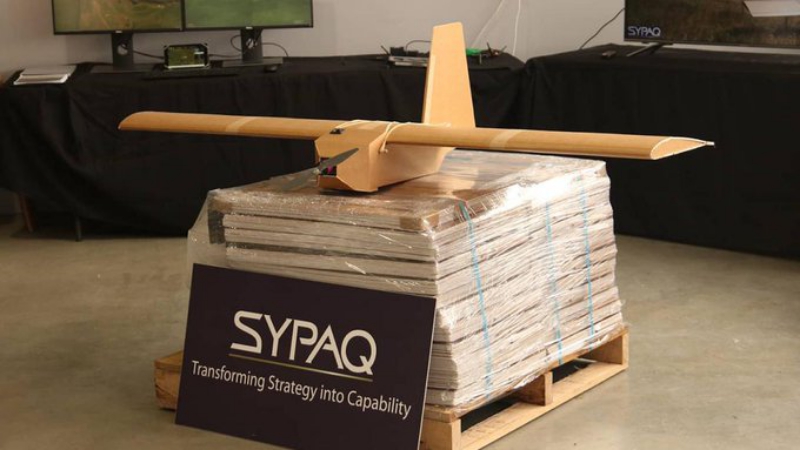On the night of 26-27 August, the military counterintelligence service of the Security Service of Ukraine (SSU) struck Russian Su-30 and MiG-29 aircraft, as well as S-300s and Pantsirs, at the Russian military airfield in Kursk with 16 drones.
Ukrainska Pravdaʼs sources indicate that kamikaze drones attacked four Su-30 and one MiG-29 aircraft. Also, S-300 radars and two Pantsirs are among the struck targets. SSU reported that almost all the drones reached their targets.
The Russians recorded at least 13 explosions, the source said. But the exact aftermath of the attack will be known “soon”. Counterintelligence officers clarified that the attack was organised by military counterintelligence officers from the 13th Main Directorate of the SSU.
Ukrainian forces reportedly used SYPAQ Corvo Precision Payload Delivery System, or PPDS, drones as loitering munitions to carry out an attack on an undisclosed Russian airfield.
The SYPAQ PPDS drone boasts an operational range of up to 120 kilometers (74 miles), 3 kilograms of payload, and a cruise speed of 60 kilometers per hour (37 miles per hour).
But what makes the PPDS stand out is that it is primarily made from a material similar to cardboard. It is a low-cost, expendable platform that can be transported as a small package and assembled rapidly with minimal tools. Its composition also makes it harder to detect by radar systems.
In May 2023, the Melbourne-based company reported having delivered the system to Ukraine.
“It is an honour to be supporting the Ukrainian Armed Forces,” SYPAQ CEO Amanda Holt said at the time. “PPDS is an Australian capability that will help the Ukrainian people defend their country.”
Sources: aerotime; yahoo! news


